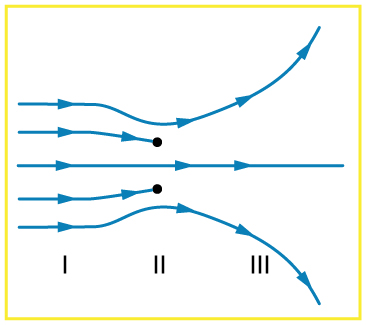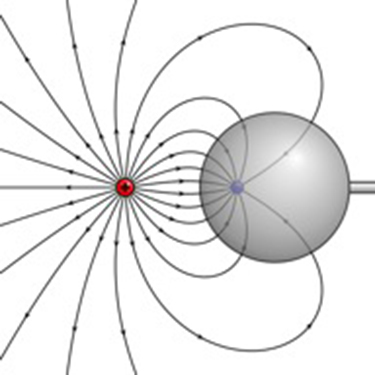| << Chapter < Page | Chapter >> Page > |
We use electric field lines to visualize and analyze electric fields (the lines are a pictorial tool, not a physical entity in themselves). The properties of electric field lines for any charge distribution can be summarized as follows:
The last property means that the field is unique at any point. The field line represents the direction of the field; so if they crossed, the field would have two directions at that location (an impossibility if the field is unique).
Move point charges around on the playing field and then view the electric field, voltages, equipotential lines, and more. It's colorful, it's dynamic, it's free.

Compare and contrast the Coulomb force field and the electric field. To do this, make a list of five properties for the Coulomb force field analogous to the five properties listed for electric field lines. Compare each item in your list of Coulomb force field properties with those of the electric field—are they the same or different? (For example, electric field lines cannot cross. Is the same true for Coulomb field lines?)
[link] shows an electric field extending over three regions, labeled I, II, and III. Answer the following questions. (a) Are there any isolated charges? If so, in what region and what are their signs? (b) Where is the field strongest? (c) Where is it weakest? (d) Where is the field the most uniform?

(a) Sketch the electric field lines near a point charge . (b) Do the same for a point charge .
Sketch the electric field lines a long distance from the charge distributions shown in [link] (a) and (b)
[link] shows the electric field lines near two charges and . What is the ratio of their magnitudes? (b) Sketch the electric field lines a long distance from the charges shown in the figure.

Sketch the electric field lines in the vicinity of two opposite charges, where the negative charge is three times greater in magnitude than the positive. (See [link] for a similar situation).

Notification Switch
Would you like to follow the 'College physics' conversation and receive update notifications?